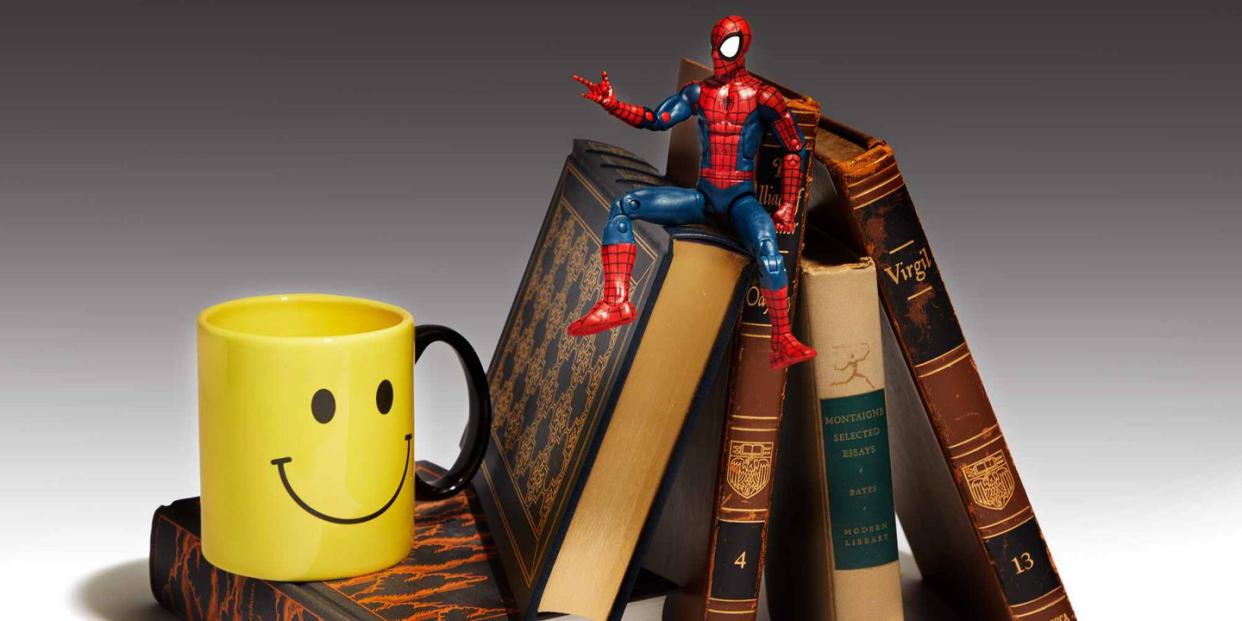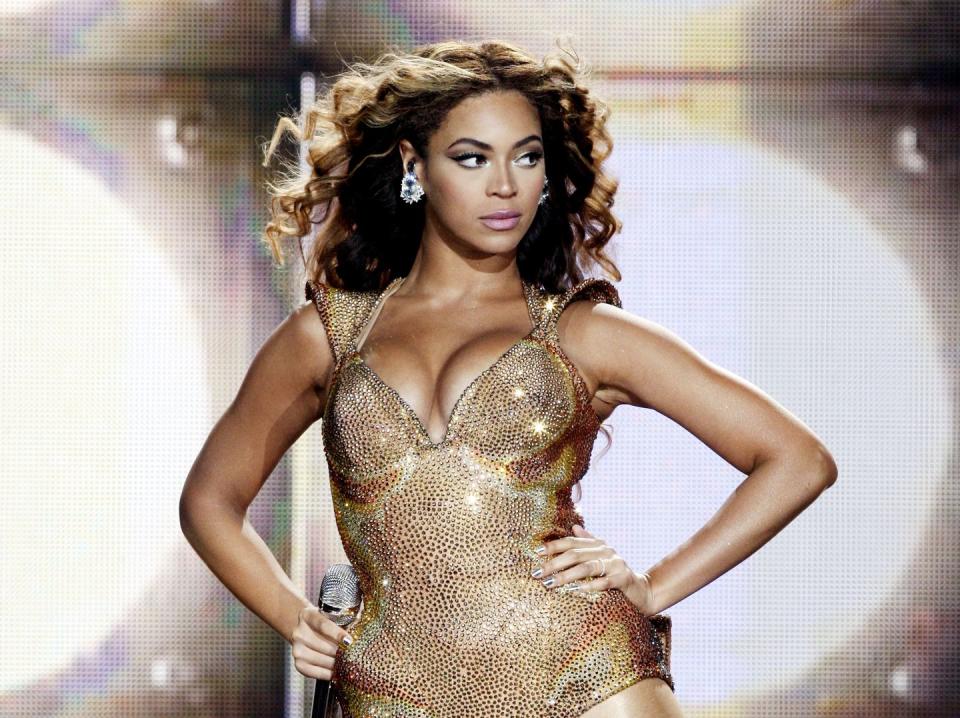How College Courses on Happiness and Humiliation Became the Hottest Trend on Campus

The name of the New York University undergraduate class was “Death in America: How Will You Die?,” but the ambience in the windowless seminar room on a sunny Monday in April was anything but morose. “Did anyone catch any death and dying news this week?” asked the bright-faced, black-clad professor, Ann Neumann. In fact, a lawyer had recently set himself on fire in Brooklyn’s Prospect Park (as a statement against fossil fuel use), and the incident led to a teachable classroom moment about the tradition and culture of self-immolation.
Flames of Aristotelian inquiry set the room on fire as the students engaged with something between vigor and rigor, nimbly discussing force-feedings in hospitals and prisons, the moral questions surrounding assisted suicide, and the socioeconomics of funerals.
“How many of you watched You Don’t Know Jack?” asked Neumann, an author and a visiting scholar, about the movie that starred Al Pacino as Jack Kevorkian. Almost every hand in the room shot up. “Yay!” said Neumann, whose nails were painted black. “That’s great.”
A listing in a college catalog that asks how you will die may seem shocking, but in a year in which a Yale class about happiness called “Psychology and the Good Life” attracted 1,200 students (nearly a quarter of the university’s undergraduate population) and went on to become a blockbuster online offering, it is hardly a surprise.
For more than a decade schools around the country have flooded their curricula with unusual courses in the hope of luring students. And it has worked. “Psychology and the Good Life” was Yale’s most popular class ever.
Coming up with a catchy title is part of the strategy. Classical historian David Halperin’s book How to Be Gay was based on a class he taught at the University of Michigan. Wayne Koestenbaum, a distinguished English professor at the City University of New York’s Graduate Center, has published several books based on ideas he has used for classes. One of them was called Humiliation.
“Thinking across disciplines and making counterintuitive leaps keep the mind alive,” Koestenbaum says. “If a name for a class doesn’t make me giggle, it’s not good enough.” He must be giggling all the time these days.
At Hampshire College a recent class was called “Emptiness.” At Oberlin “How to Win a Beauty Pageant” applied cultural studies methodology to aspects of feminism and politics. Occidental College offered a critical theory course on stupidity.
The New School’s website boldly advertises “Fasting and Spiritual Technology,” which is about “the pleasure of no pleasure...expiation and purification, sacrifice and repentance.” At Rutgers, meanwhile, “Politicizing Beyoncé” has been an attention-getter in the women and gender studies department-although it won’t be taught next year, because its feisty professor was placed on temporary administrative leave after an offensive Twitter rant.

Meanwhile, at Skidmore, “The Sociology of Miley Cyrus” studied “aspects of intersectional identities and media representation.” Twerking, one would assume, was included in the syllabus. And if zombies are your thing, you can study them at any number of schools.
To understand how all this happened, some deconstructive and historical analysis is required, not to mention a touch of semiotics and communications theory. In the late 1960s the fields of women’s studies and black studies broke academic ground by promoting the analysis of traditional sexual and racial structures in a white male–dominated society. Gender studies, queer studies, and cultural studies followed, creating new and innovative cross-disciplinary methods of academic analysis. Politics entered the classroom as well.
“Many professors think their work is as much about social justice and advocacy as teaching,” says Samuel Abrams, who just taught a popular “Presidential Power” class at Sarah Lawrence. “But I created that class because of student ignorance about what a president can and can’t do.”
Unlike professors who bristle when told by department heads to come up with catchier names for classes, Abrams, 38, obliges with enthusiasm. “College is a marketplace for ideas, so you have to be entrepreneurial with your courses,” he says. “And in a world of digital domination, you have to be innovative to get attention.” Also, given the popularity of so many quick-hit knowledge videos, including TED Talks and Ed X, showmanship sells.
Sometimes the sell is ridiculous. For instance, an online course offered by Harvard, “Power and Responsibility: Doing Philosophy with Superheroes,” has a promotional video with cartoon graphics in which a lecturer in ethics and public policy strips off his glasses and button-down shirt to reveal a tight T-shirt with a big H over his less than fit torso. Meanwhile, a class in Brown’s archaeology department, “Of Dice and Men: Games in Human Societies Past and Present,” declares, in a bold play for enrollment, “Students will play games!”
Not all educators applaud the academic rush to fun and contemporary relevance. “It seems to me that higher education is going off the rails by offering so many classes with curb appeal,”says Matthew Davis, a dean at the Santa Fe campus of the rigorous St. John’s College. Andrew Delbanco, professor of American studies at Columbia, believes that certain writers never get old."That’s why there’s value in a class that introduces great books rather than the latest superhero movie,” he says. “To understand the present means engaging with the past.”
Richard Saller, a professor and former dean of humanities at Stanford, worries that trendy courses about the present can trivialize not just education but how young people look at life. “Students have many opportunities to participate in digital culture,” he says. “Our challenge as educators is to teach the value of deeper thinking.”
It’s worth noting that the debate about what constitutes a classical education has raged since, well, classical times. Plato laid out the correct way to educate philosopher-kings in The Republic. In the fifth century a philosopher named Martianus Minneus Felix Capella, in his opus De Nuptiis Philologiae et Mercurii, described a system of education based on teaching seven liberal arts; the principles of his system were embraced throughout the Middle Ages.
During the identity politics debates of the 1990s, when students questioned the merits of reading mostly “dead white European males,” New York magazine film critic David Denby returned to Columbia to do just that for Great Books, his account of retaking the university’s famous required freshman lit classes. Today the much discussed “classical education movement” is reshaping curricula in primary, middle, and high schools around the country.
But Andrew Ross, a professor at NYU’s department of Social and Cultural Analysis, finds innovation and even showmanship useful, perhaps even essential, in academia right now. The last class he created was a doozy: “Migration, Refugees & the Politics of Sanctuary,” which was based on students’ interest in immigration and their opposition to Trump policy.
“Professors from all over the school were coming in to give lectures,” says Ross of the sold-out class, which brought students historical and cross-cultural perspectives. “I told students they were getting the equivalent of an all-access pass to a rock festival.”
Josie Danziger, an art history major at Bard College, felt that way about her recent spring semester seminar on photography and Instagram. “It’s taught by Stephen Shore,” she says, referring to the famous photographer, who just had a Museum of Modern Art retrospective. “When I tell people about the class, it’s hard for them to roll their eyes once they hear who’s teaching it.” Those people include her father James Danziger, an important photography dealer. “If my daughter’s going to take a gut, it might as well be with Stephen Shore,” he says.
Holly Peterson, a Brown parent and alumna who hears about all kinds of oddball classes from her son, remembers telling her father, the late financier Peter Peterson (who studied at the notoriously inflexible University of Chicago), about a group independent study she took while a student of women’s studies in the late 1980s. It focused on the behavior and sensitivities of men. “He almost fell off his chair,” she says. “But I believe that when you allow choice and freedom in a college curriculum, only the kids who want to really learn something will be in the class, and they’re going to work hard and do well.”
Indeed, this seemed to be the case in the “How Will You Die?” seminar at NYU. After two hours or so, the students, some facing personal issues of mortality involving friends and family members, led out, exhausted but inspired. One student, Mathania Toussaint, lingered. She said she plans to go to medical school, which is why her choice of religious studies as a major confuses her mother.
“Learning about ethics and religion in a class about death will help me understand my patients better,” she said. The previous semester she had taken a class about monsters. Was that helpful for her academic future too? “I don’t know, but it was helpful in helping me enjoy college,” she said.
This story appears in the August 2018 issue of Town & Country. Subscribe Now
You Might Also Like

